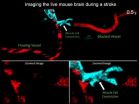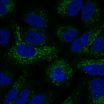(Press-News.org) The American Association for the Study of Liver Diseases (AASLD), in partnership with the Infectious Diseases Society of America (IDSA) and in collaboration with the International Antiviral Society-USA (IAS-USA), created online Recommendations for Testing, Managing, and Treating Hepatitis C in 2014 to aid practitioners treating patients infected with hepatitis C virus (HCV). Now an update to the Guidance, with a summary of recommendations regarding treatment with direct-acting antiviral drugs, is published in the AASLD journal, Hepatology.
HCV is a blood-borne virus that infects the liver and may lead to cirrhosis or liver cancer (hepatocellular carcinoma). In the past 25 years HCV has gone from an undiagnosed disease to an epidemic level, with the World Health Organization (WHO) estimating that up to 150 million people worldwide live with chronic disease.
In the U.S., close to 30,000 new acute cases were reported in 2013 and 2.7 million Americans have chronic HCV according to the Centers for Disease Control and Prevention (CDC). "The good news is that HCV is now on the cusp of being a curable disease for the millions of Americans, many of whom are undiagnosed," says Dr. Gary Davis, President of MedLogician Consulting and co-chair of the AASLD/IDSA HCV Guidance writing panel. "The web-based Guidance document is an easy-to-use resource for practitioners treating HCV patients with novel antivirals."
A panel of 26 hepatologists and infectious diseases specialists and a patient advocate developed the original consensus recommendations that include:
HCV testing details and linkage to care
Recommendations for initial treatment of HCV infection in patients starting treatment
Retreatment information in persons in whom prior therapy has failed
Unique patient populations data
"The Guidance is a living document that will continually be updated with evidence-based advice about how to best use the next generation of direct-acting antivirals and other treatment options," comments Dr. Keith Lindor from the Arizona State University and President-elect of AASLD. "Our role as associations of researchers and clinicians is to provide key information in the appropriate format to patients and those who care for them."
INFORMATION:
Practitioners involved with treating patients with liver disease may access the Guidance, including new updates, at http://www.HCVGuidelines.org.
This guidance is published in Hepatology. Media wishing to receive a PDF of this article may contact sciencenewsroom@wiley.com.
Full citation: "Hepatitis C Guidance: AASLD-IDSA Recommendations for Testing, Managing, and Treating Adults Infected with Hepatitis C Virus." Authors on behalf of the Hepatitis C Guidance Panel (see AASLD/IDSA HCV Guidance panel members and authors). Hepatology; Published Online: June 25, 2015, (DOI: 10.1002/hep.27950).
URL: http://doi.wiley.com/10.1002/hep.27950
About the Journal
Hepatology is the premier publication in the field of liver disease, publishing original, peer-reviewed articles concerning all aspects of liver structure, function and disease. Each month, the distinguished Editorial Board monitors and selects only the best articles on subjects such as immunology, chronic hepatitis, viral hepatitis, cirrhosis, genetic and metabolic liver diseases and their complications, liver cancer, and drug metabolism. Hepatology is published by Wiley on behalf of the American Association for the Study of Liver Diseases (AASLD). For more information, please visit http://wileyonlinelibrary.com/journal/hep.
About Wiley
Wiley is a global provider of knowledge and knowledge-enabled services that improve outcomes in areas of research, professional practice and education. Through the Research segment, the Company provides digital and print scientific, technical, medical, and scholarly journals, reference works, books, database services, and advertising. The Professional Development segment provides digital and print books, online assessment and training services, and test prep and certification. In Education, Wiley provides education solutions including online program management services for higher education institutions and course management tools for instructors and students, as well as print and digital content.
(Philadelphia, PA) - In a life-threatening situation, the heart beats faster and harder, invigorated by the fight-or-flight response, which instantaneously prepares a person to react or run. Now, a new study by researchers at Temple University School of Medicine (TUSM) shows that the uptick in heart muscle contractility that occurs under acute stress is driven by a flood of calcium into mitochondria--the cells' energy-producing powerhouses.
Researchers have long known that calcium enters mitochondria in heart muscle cells, but the physiological role of that process was ...
When neurons become active, they call for an extra boost of oxygenated blood -- this change in the presence of blood in different regions of the brain is the basis for functional brain scans. However, what controls this increase or decrease in blood supply has been a long-standing debate.
In a paper published on June 25 in Neuron, Yale University scientists present the strongest evidence yet that smooth muscle cells surrounding blood vessels in the brain are the only cells capable of contracting to control blood vessel diameter and thus regulate blood flow. This basic ...
Think the nest of cables under your desk is bad? Try keeping the trillions of connections crisscrossing your brain organized and free of tangles. A new study coauthored by researchers at UC San Francisco and the Freie Universität Berlin reveals this seemingly intractable job may be simpler than it appears.
The researchers used high-resolution time-lapse imaging of the developing brains of pupal fruit flies (Drosophila melanogaster) paired with mathematical simulations to unravel a trick of neural wiring that had stumped neuroscientists for decades. They discovered ...
Adult fruit flies given a cancer drug live 12% longer than average, according to a UCL-led study researching healthy ageing. The drug targets a specific cellular process that occurs in animals, including humans, delaying the onset of age-related deaths by slowing the ageing process.
The study published today in Cell and funded by the Max Planck Society and Wellcome Trust shows for the first time that a small molecule drug, which limits the effects of a protein called Ras, can delay the ageing process in animals. The treated fruit flies outlived the control group by staying ...
Boston, MA -- A new study led by researchers at Harvard T.H. Chan School of Public Health finds that a malaria parasite protein called calcineurin is essential for parasite invasion into red blood cells. Human calcineurin is already a proven target for drugs treating other illnesses including adult rheumatoid arthritis and lupus, and the new findings suggest that parasite calcineurin should be a focus for the development of new antimalarial drugs.
"Our study has great biological and medical significance, particularly in light of the huge disease burden of malaria," said ...
LA JOLLA--As a tumor grows, its cancerous cells ramp up an energy-harvesting process to support its hasty development. This process, called autophagy, is normally used by a cell to recycle damaged organelles and proteins, but is also co-opted by cancer cells to meet their increased energy and metabolic demands.
Salk Institute and Sanford Burnham Prebys Medical Discovery Institute (SBP) scientists have developed a drug that prevents this process from starting in cancer cells. Published June 25, 2015 in Molecular Cell, the new study identifies a small molecule drug that ...
Washington, DC (June 25, 2015) - Comment sections on websites continue to be an environment for trolls to spew racist opinions. The impact of these hateful words shouldn't have an impact on how one views the news or others, but that may not be the case. A recent study published in the journal Human Communication Research, by researchers at the University of Canterbury, New Zealand, found exposure to prejudiced online comments can increase people's own prejudice, and increase the likelihood that they leave prejudiced comments themselves.
Mark Hsueh, Kumar Yogeeswaran, ...
June 25 -- During the wars in Iraq and Afghanistan, U.S. combat support hospitals treated at least 650 children with severe, combat-related head injuries, according to a special article in the July issue of Neurosurgery, official journal of the Congress of Neurological Surgeons. The journal is published by Wolters Kluwer.
"Given the challenging environment and limited available resources, coalition forces were able to provide quality, timely, and life-saving care to many children" with severe head injuries, write Dr. Paul Klimo, Jr., of Semmes-Murphy Neurologic & Spine ...
A large number of patients use online communication tools such as email and Facebook to engage with their physicians, despite recommendations from some hospitals and professional organizations that clinicians limit email contact with patients and avoid "friending" patients on social media, new research suggests.
The findings from Johns Hopkins Bloomberg School of Public Health researchers suggest a disconnect between what patients expect and what physicians -- concerned about confidentiality and being overwhelmed in off-hours -- are willing to do when it comes to online ...
June 25, 2015 - New results in animals highlight a major safety concern regarding a class of magnetic resonance imaging (MRI) contrast agents used in millions of patients each year, according to a paper published online by the journal Investigative Radiology. The journal is published by Wolters Kluwer.
The study adds to concerns that repeated use of specific "linear"-type gadolinium-based contrast agents (GBCAs) lead to deposits of the heavy-metal element gadolinium in the brain. The results will have a major impact on the multimillion-dollar market for MRI contrast agents, ...

